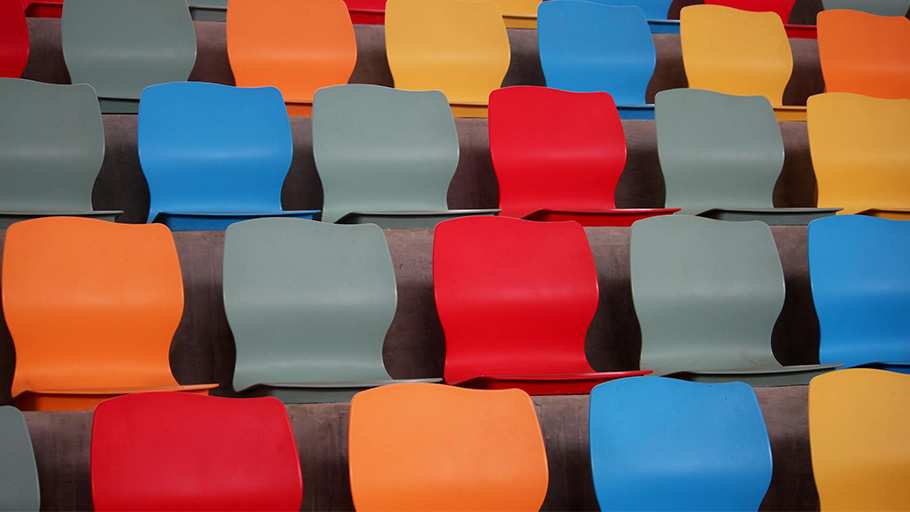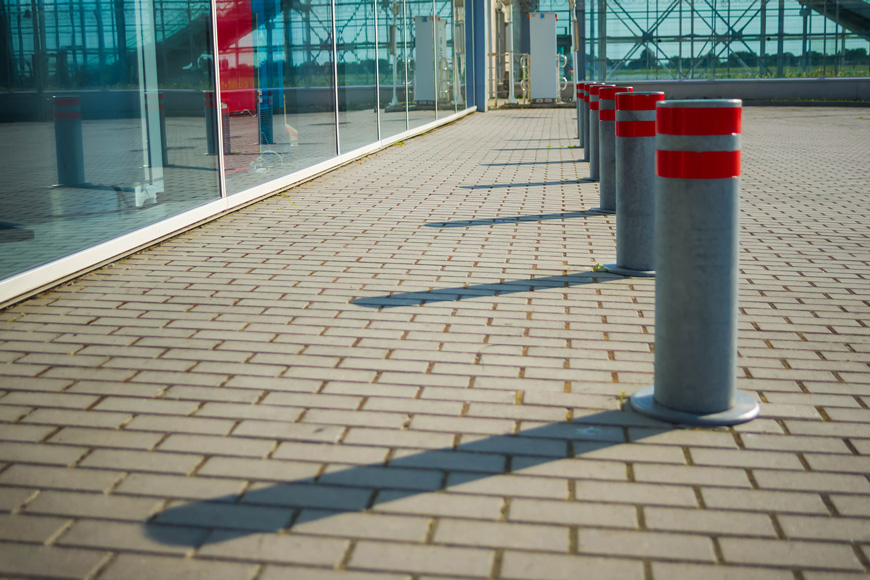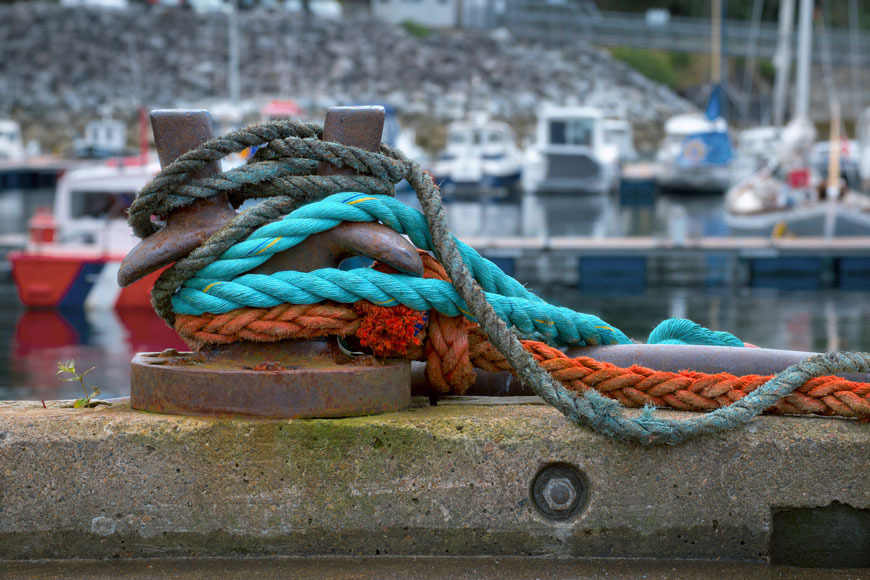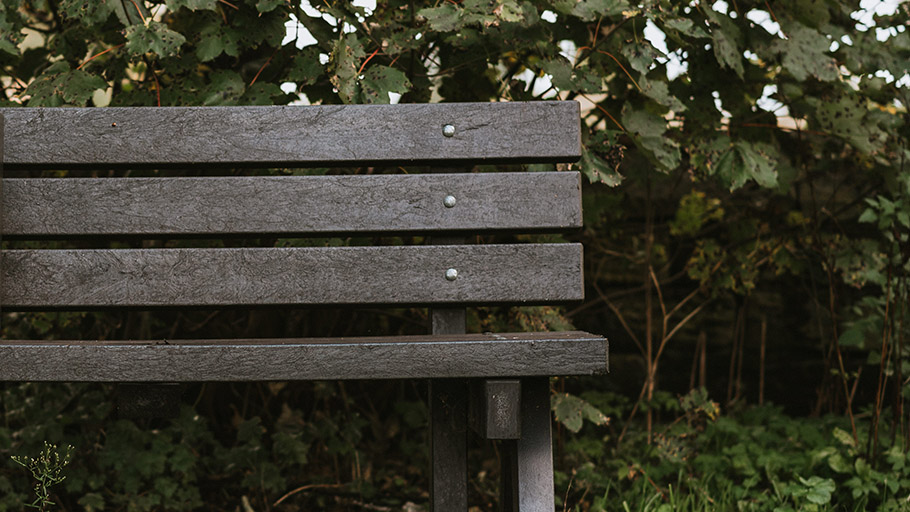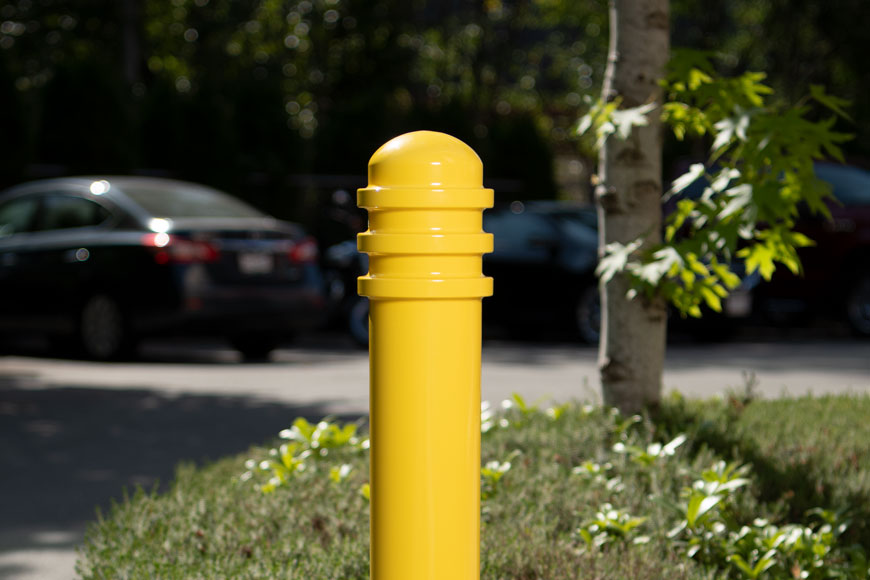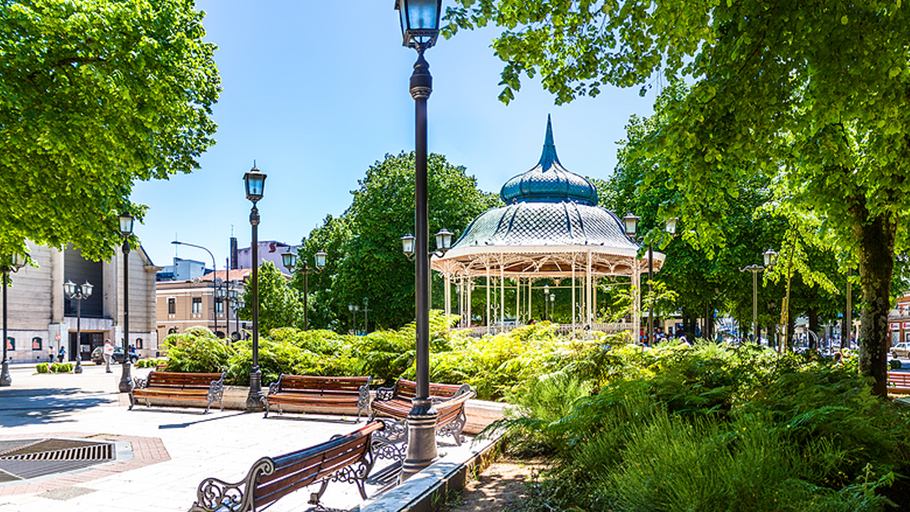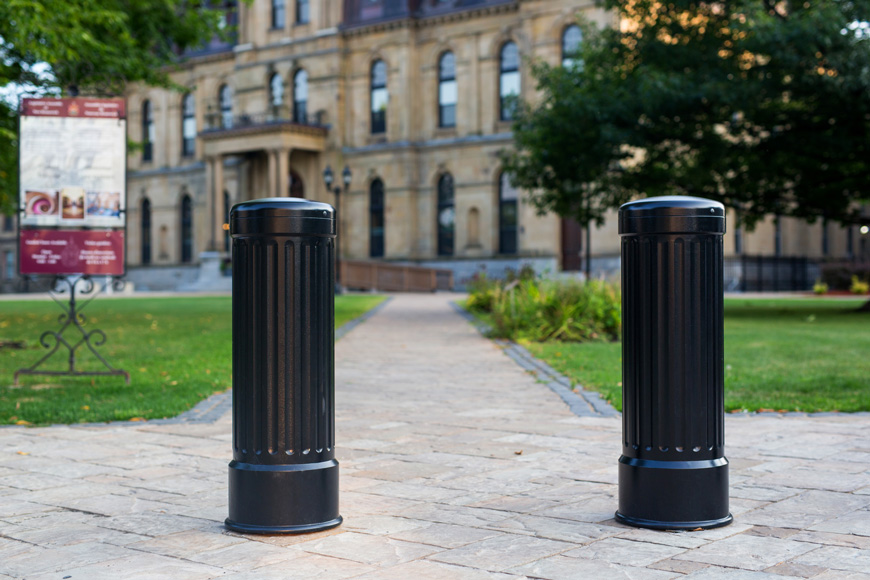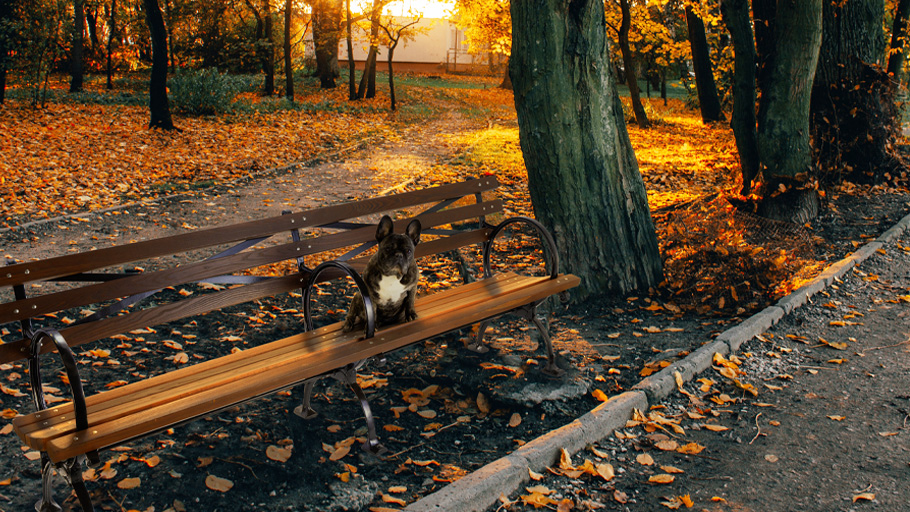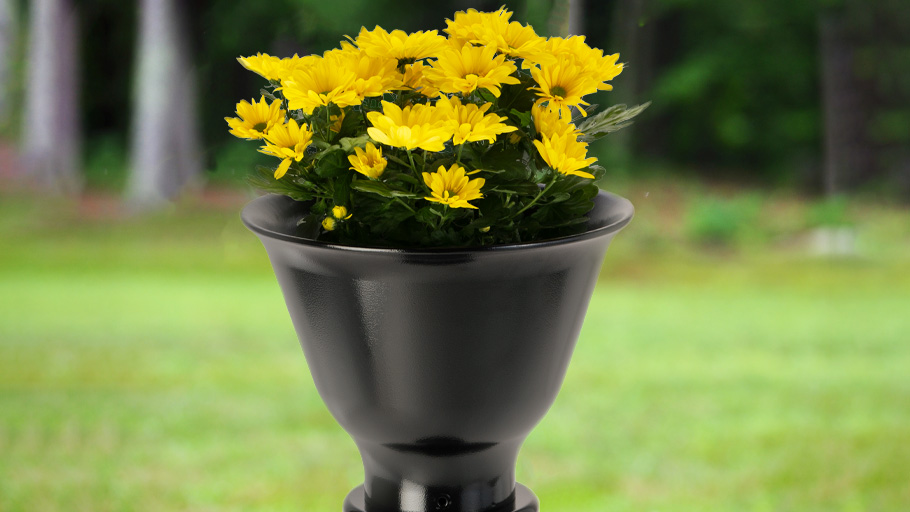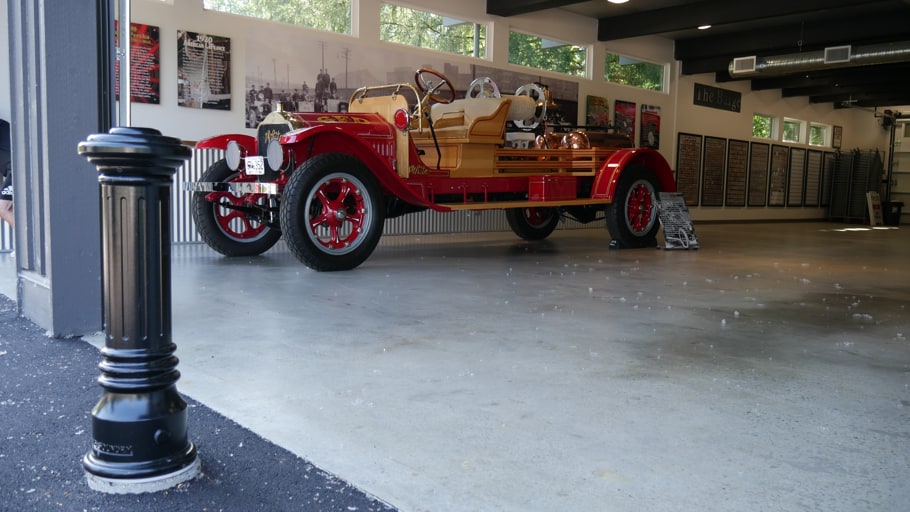A Comprehensive Guide
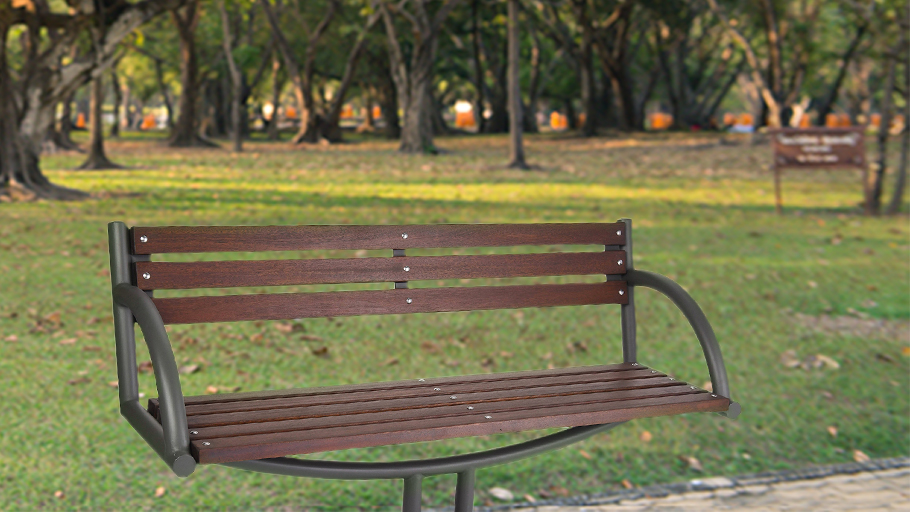
Site furnishings play a vital role in crafting thriving and inviting outdoor social spaces. They are carefully selected and strategically installed elements that facilitate the creation of vibrant social landscapes, offering people the opportunity to connect, foster a sense of community, and fully embrace the carefully designed landscape in safety and comfort.
What Is Site Furniture?
It is crucial to distinguish site furnishings from other types of furniture, such as patio or office furnishings, as they serve distinct purposes. While office chairs, couches, and similar items are typically found in commercial spaces, they are often portable or movable, while site furnishings are fixed installations and are generally used to enhance public spaces.
The range of site furnishings encompasses various commercial-grade elements, including benches, trash cans, planters, picnic tables, and lighting fixtures. One of the defining features of site furniture is exceptional durability, surpassing that of consumer products. The intention is for these fixtures to endure the heavy demands of frequent public usage and ideally last for many years without significant wear and tear.
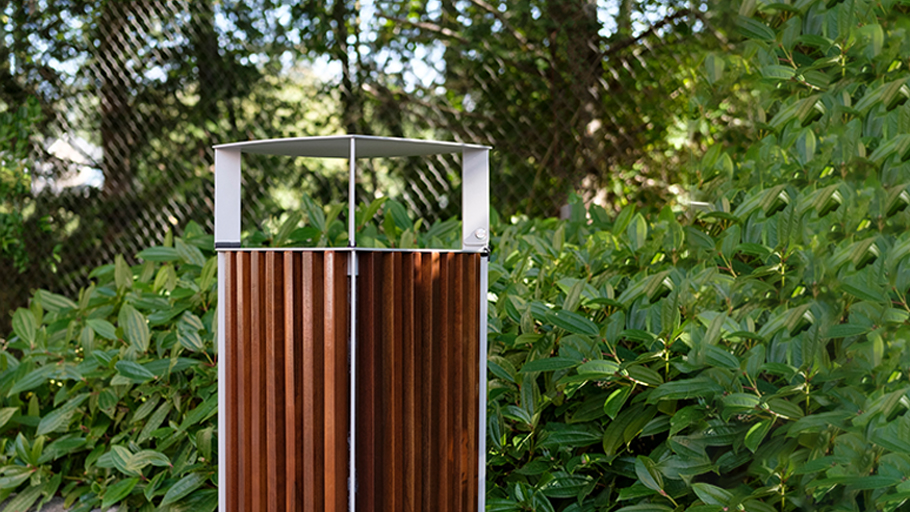
Making the Right Choice
By incorporating the right mix of site furnishings in outdoor environments, designers and planners can transform ordinary spaces into dynamic hubs that promote interaction, relaxation, and enjoyment. These thoughtfully chosen elements not only enhance the aesthetics of the landscape but also encourage social engagement, fostering a strong sense of place for individuals and communities alike. Whether in parks, plazas, urban streetscapes, or recreational areas, well-designed site furniture play a fundamental role in shaping the character and functionality of public spaces.
When selecting your site furnishings, you’ll want to consider three broad categories: functionality, design, and material. Your evaluation of each piece will first be determined by its function. Benches, for example, serve a separate and distinct function from trash cans, recycling receptacles, bike racks, or planters.
When considering benches, for instance, think about what kind of bench you’ll need based on where it will be located and what might best serve the needs of the people who will use it. A bench placed against a wall may not require a backrest, for example. Waste disposal furnishings will come with a different set of considerations, including bin volume, lid type, and maintenance requirements. Exciting new smart waste technologies can also be considered, allowing you to monitor how full your bins are remotely.
Site Furniture Material
When choosing site furniture, you must consider the site environment and climate. The material will impact the durability and longevity. Think about where the site furniture will be installed: indoors or outdoors? What kind of weather will it have to endure? Will the area be hot, cold, or both? Wet or dry?
Typical site furniture materials include wood, steel, stainless steel, concrete, wrought or cast iron, and aluminum, or plastic. Each offers advantages and disadvantages.
Steel
Carbon steel, an alloy of carbon and iron, is a versatile and durable material that is frequently used in site furnishings. The addition of carbon to the steel composition enhances its strength and makes it an excellent choice for furniture that needs to withstand heavy use and resist dents, impacts, and bending. Its robust nature ensures that carbon steel site furnishings maintain their shape and structural integrity over extended periods, even in high-traffic outdoor settings.
Designers and manufacturers often appreciate carbon steel for its versatility and malleability. It can be easily fabricated into different shapes and forms, allowing for the creation of custom designs and intricate details. Additionally, carbon steel is relatively cost-effective compared to other metals, making it an attractive option for projects with budget considerations.
To maintain the appearance and longevity of carbon steel site furnishings, proper finishing is crucial. Applying a weather-resistant coating, such as powder coating or IronArmor, provides an extra layer of protection against corrosion and enhances its resistance to environmental factors. Regular maintenance, such as cleaning and inspections, can further extend the life of carbon steel furniture, ensuring it remains an elegant and durable addition to outdoor spaces.
Stainless Steel
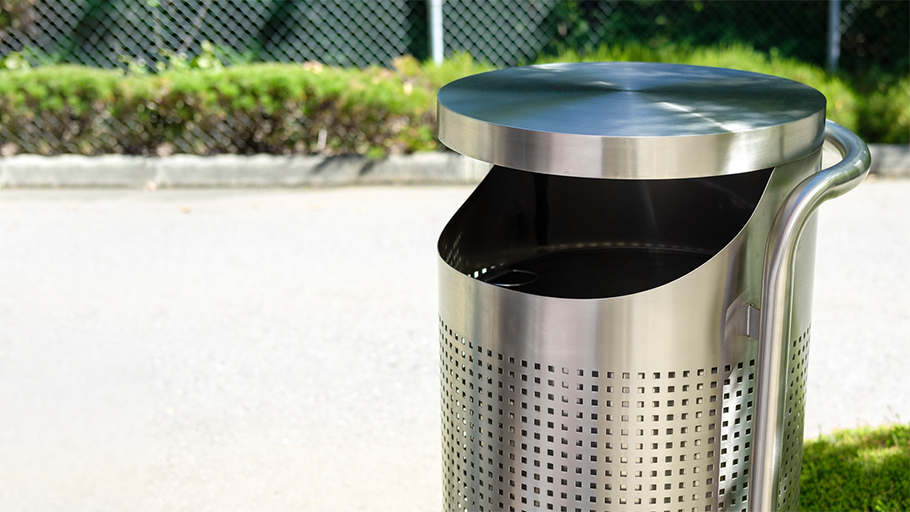
Stainless steel site furnishings exude a modern and sophisticated aesthetic, adding a touch of elegance to any outdoor setting. Its sleek and polished appearance complements various architectural styles, making it a popular choice for contemporary public spaces, plazas, and commercial areas.
Because of stainless steel’s chemical composition, which includes the addition of chromium to carbon steel, it is a highly desirable material for site furnishings in challenging and corrosive environments. The presence of chromium forms a protective oxide layer on the surface of the steel, making it highly resistant to rust and corrosion. This unique property makes stainless steel an ideal choice for site furnishings exposed to coastal areas, urban environments with pollution, or regions with high humidity and rainfall.
Cast Iron
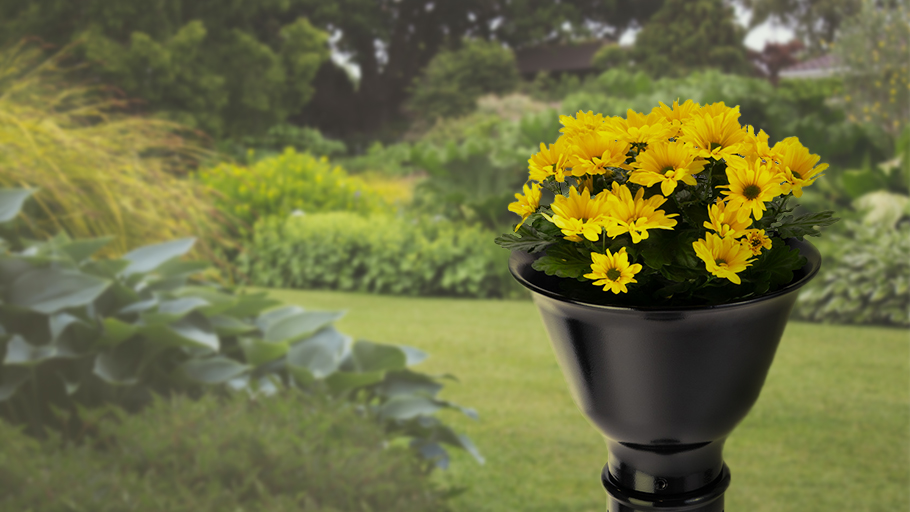
Cast Iron is a robust and versatile material that holds a special place in the world of site furniture. Its unique properties make it an excellent choice for creating both functional and decorative outdoor furniture, infusing any space with a charming old-world aesthetic. One of the standout features of cast iron is its ability to be poured into intricate molds, allowing designers to craft site furnishings with elaborate and artistic details. Cast iron site furnishings come in a wide array of designs and styles, ranging from classic Victorian-inspired benches to ornate lampposts and decorative planter bollards.
To ensure longevity, proper maintenance of cast iron site furnishings is essential. One of the main challenges faced by cast iron is its susceptibility to corrosion when exposed to moisture and harsh elements. To mitigate this, cast iron pieces are treated with a protective powder coating to inhibit rust formation.
Aluminum
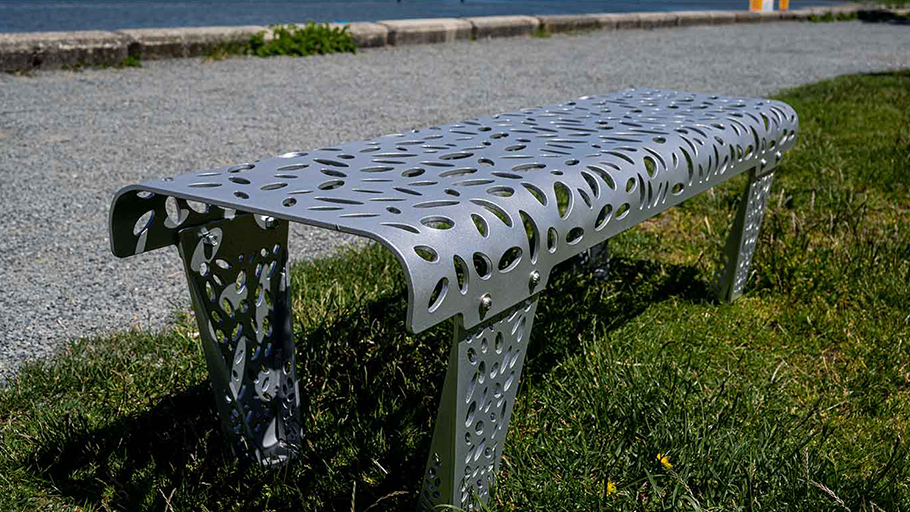
Aluminum is a highly versatile and sought-after material for a wide range of outdoor site furnishings. Its exceptional combination of lightweight, durability, and corrosion resistance makes it a top choice for creating functional and aesthetically pleasing elements in public spaces. From bike racks and bollards to benches and outdoor seating, aluminum’s attributes make it an ideal material for various site furnishings.
One of the standout features of aluminum is its remarkably lightweight nature, making it easier to transport and install. This characteristic is particularly advantageous for site furnishings that may be seasonal, require scheduled repositioning, or for projects in areas with restricted access. Wood
Wood
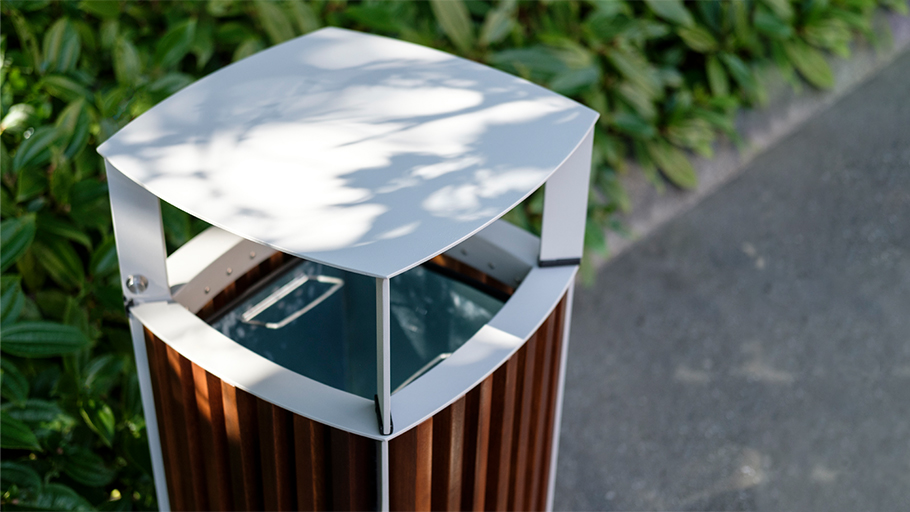
Wood is a timeless and traditional material that has been widely used for crafting outdoor benches and picnic tables. It offers a natural charm and warmth that enhances the aesthetics of any outdoor space, from parks and gardens to recreational areas and public plazas. Besides its visual appeal, wood boasts several advantageous qualities, making it a popular choice for site furnishings.
Sustainability is a key consideration when selecting wood for outdoor furniture. Opting for responsibly sourced wood from well-managed forests ensures that the material is harvested in an ecologically balanced manner, promoting forest regeneration and biodiversity conservation. It’s also important to consider how much weathering (and therefore maintenance) the furnishing will endure. Rainy climates can be tough on wood, which can make it susceptible to mold and rot, but so can hot, dryer climates, which can lead to cracking.
Recycled Plastic Lumber
Recycled Plastic Lumber is an innovative and environmentally-friendly alternative to traditional wood lumber. It is manufactured using a blend of post-consumer and post-industrial recycled plastics, such as HDPE (High-Density Polyethylene) and LDPE (Low-Density Polyethylene), derived from items like plastic bottles, packaging materials, and discarded plastic products. This recycling process not only helps to reduce the burden on landfills but also conserves natural resources by diverting plastic waste and giving it new life as a durable construction material.
One of the standout features of plastic lumber is its exceptional versatility. It can be molded and shaped into various profiles, mimicking the appearance of natural wood. It’s also more durable, and isn’t susceptible to rot—nor does it require treatment, which makes it very well suited for use on benches. The flexibility of this material allows for the creation of customized pieces that suit specific project requirements, making it an excellent choice for various applications in outdoor site furnishings.
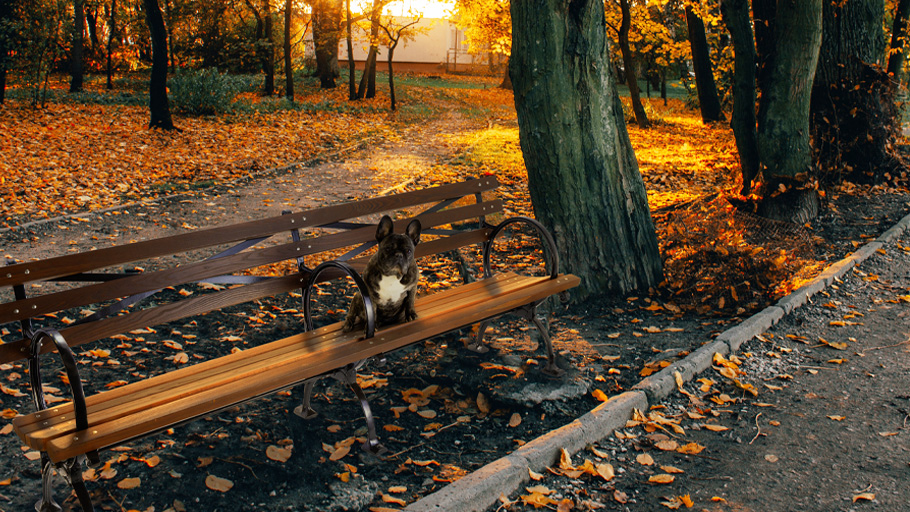
Design and Finish
When selecting the design of site furnishings, it is essential to strike a balance between desired aesthetics and the necessary durability and corrosion resistance of the chosen materials. The material choice significantly impacts the available styles and design options suitable for your project.
The type of wood selected for benches, for example, should be chosen with a mind for durability as well as style. Wood is typically oil brushed to last longer in outdoor environments, but it increases the maintenance required. Oil should be reapplied to wood furnishings yearly as part of your regular maintenance regime.
Steel furnishings are well suited to both contemporary and traditional designs but typically require coatings to prevent rust. Steel waste bins, for example, are often powder coated for long term outdoor service, prolonging the life of the fixture, and reducing the need for maintenance and replacement. Powder coating is a cost-effective method of protection and provides a long-lasting finish in most, but not all, environments.
Materials like cast iron lend themselves well to ornate and traditional designs, evoking a sense of timeless elegance, but, like steel, even with powder coating they might not be the most suitable option for environments that are regularly exposed to sodium chloride. On the other hand, aluminum and stainless steel offer sleek and contemporary options while providing a higher resistance to corrosion, with 316 stainless in particular being well suited to marine environments.
By considering the desired aesthetics alongside the required durability and corrosion resistance, it is possible to select site furnishings that not only enhance the visual appeal of the space but also ensure long-lasting performance in the face of environmental challenges.
Installation
The installation methods for site furnishings can indeed vary depending on the specific product, but a common practice involves securing them to existing concrete surfaces using various concrete anchors. These anchors provide a secure and stable foundation for the furnishings, ensuring they remain firmly in place, even under heavy usage and outdoor conditions. Reliance Foundry offers benches that come equipped with two primary types of concrete anchors: drop-in anchors and expansion bolts.
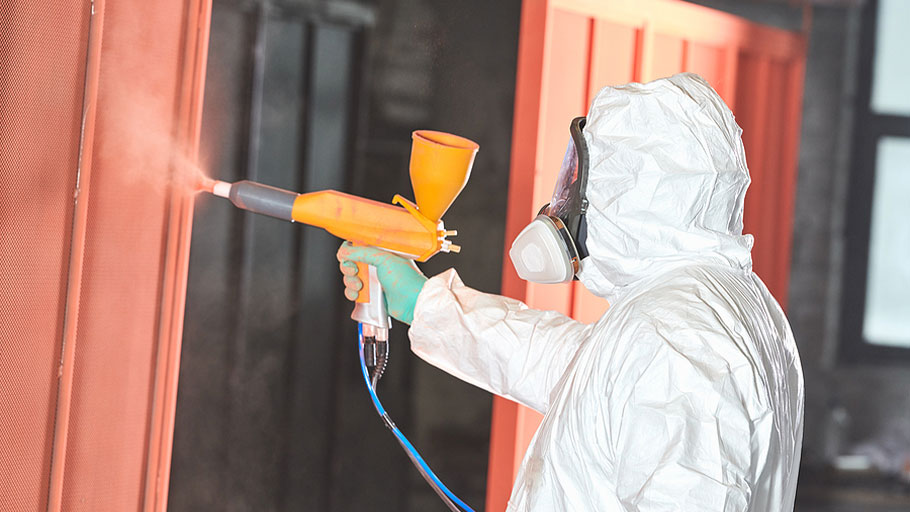
Considering functionality, style, and material is an excellent starting point when evaluating the most suitable site furnishings for your outdoor space and meeting users’ needs. Each of these considerations serves as a gateway to a broader range of factors to be considered. For instance, the layout of the space should be carefully examined to ensure seamless integration of furnishings and optimized usability. Incorporating accessibility features is also essential to promote inclusivity and cater to diverse users, enhancing the overall experience for everyone. Anticipating the expected amount of foot traffic and usage will inform decisions on the level of durability and sturdiness required for the chosen furnishings.
By carefully evaluating your project needs, you can make well-informed decisions in selecting the right site furnishing pieces to complete your urban landscape, park, or trail.

